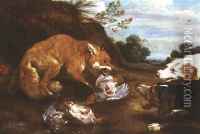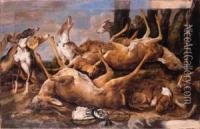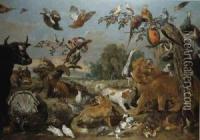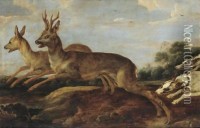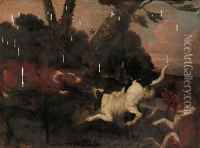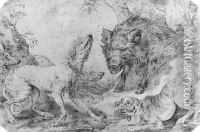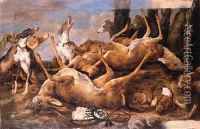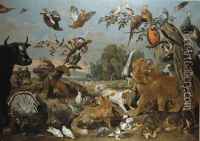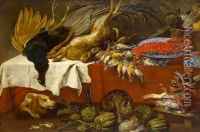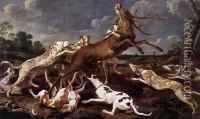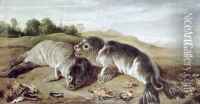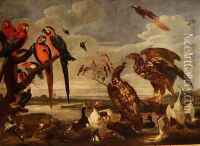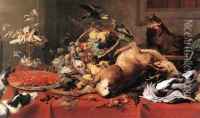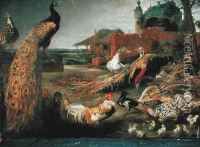Paul de Vos Paintings
Paul de Vos was a Flemish painter who specialized in animal paintings and was particularly known for his hunting scenes, lush landscapes, and depictions of wild animals. Born in Hulst near Antwerp in 1591, he was part of an artistic family, with both his brothers, Cornelis and Jan de Vos, also being painters.
Paul de Vos likely trained with his brother-in-law, the prominent painter Frans Snyders, who was renowned for his still lifes and animal paintings. This influence is evident in Paul’s work, which often bears a resemblance to Snyders' compositions and subject matter.
Throughout his career, de Vos collaborated with other leading artists of the time, including Peter Paul Rubens and Jacob Jordaens. Such collaborations were common in the Antwerp artistic community, where painters would often contribute their specialty, such as animals or still lifes, to a larger composition.
De Vos became a master in the Antwerp Guild of Saint Luke in 1620, which marked the beginning of a successful career. He received commissions from affluent patrons and members of the nobility throughout Europe, which allowed him to develop a style that was grandiose yet detailed, with a dynamic sense of movement, particularly in the depiction of animals.
Paul de Vos's paintings were often characterized by their lively and dramatic scenes filled with multiple animals, and he displayed a keen understanding of animal anatomy and behavior. His ability to render fur and hide textures added a sense of realism to his work, while his compositions were animated with a baroque sense of drama.
Despite his success, there is not a great deal of biographical information available about Paul de Vos’s personal life. He seems to have spent most of his career in Antwerp, where he died in 1678. His works remain in various collections and museums, where they continue to be admired for their vitality and technical skill.
